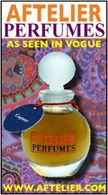
Christian Dior's 1947 New Look was a prescriptive manner of dress that was said to signify release from the penury of the war years. It heralded a return to femininity that had been lost to ration coupons and shortages and fiber polymers. Despite its elegant outline, the New Look--by nomenclature, Dior's debut collection "Carolle"-- trapped women in strict sartorial servility while it trussed, bound, and overamplified the natural female contours.
A history of the New Look construction reveals that the unnatural silhouette had more in common with the structural confinement of the Victorian era than it did with anything modern or revolutionary; although chic it was a sui generis step backward into confining design. This stylistic recidivism is intriguing, considering the era in which it occurred.
The Carolle collection debuted shortly after the end of World War Two, a period in history where women had replaced a significant percentage of the male manufacturing workforce. Two years prior, these new working women had been represented by Rosie the Riveter (or other advertising iconography), a burly, decidedly unglamorous emblem who held her own in what had been a exclusively male preserve.
Dior's theory (and the widespread adoption of the look affirms this), was that women were relieved to have the opportunity to return to stable domesticity, to gentle and traditional female pursuits and manners of dress. The Carolle designs were thus a celebration of this return to form. However, it is interesting to consider the New Look in reference to two other periods of equality/emancipation in which female fashion underwent a sea change: the era of post-Edwardian suffrage and the era of women's liberation.
Although suffrage movements had begun in the Victorian era, they reached a vocal peak shortly before and during World War One. This time period coincides with a shift away from the restrictive Victorian manner of dress into a more fluid shape. Similarly, the women's lib movements of the 1960s also occasioned a change in outline; in this case away from the perceived repression of the New Look and into a completely natural figuration.
The rejection of traditional feminine lines and female appurtenances by the women's libbers was a direct reflection of their political agenda. The dropped waists of the World War One era were not so clearly linked to suffrage, and yet they seem to go hand in hand with the critical mission of women's rights. The tight corsets and stays of Victorian dress confined a woman while supposedly exhibiting her finest sexual assets, placing her in a subjugated position that was antithetical to her fight for equal rights.
in hand with the critical mission of women's rights. The tight corsets and stays of Victorian dress confined a woman while supposedly exhibiting her finest sexual assets, placing her in a subjugated position that was antithetical to her fight for equal rights.
Unlike the suffrage and liberation movements, the women whom Rosie the Riveter represented had no soi disant political platform. Initially, they were merely playing a necessary part in the grander theatre of war. History tells us, however, that many of these women were not so pleased to renounce their newfound muscle once the boys returned from battle. It is in this light that Dior's sweeping statement about a return to femininity is perhaps contradictory; one can only conclude that the severest form of bodily manipulation required for the New Look designs was not as universally popular as fashion overviews indicate. Moreover, the undergarments used to display the New Look to its proper degree bordered on and acted nearly as fetish wear. The designs seemed to codify female sexual empowerment into flower-like* polar extremes. The waist, cinched in by a "waspie," rose like a pistil from the exaggerated seed-bearing bloom of the hips. The presentation became an odd epitaph for Rosie the Riveter, consigning her to the joy of petticoat domesticity she tabled while fighting the homefront battle.
The New Look image must have been at least partially counterproductive and counterintuitive for women who had earlier been building battleships and B-29 Superfortresses. It is hard to believe that such women clamored to wear the designs in their most oppressive forms. In hindsight, can we accept such drastic femininity as a palliative for honest manual labor or as a nostrum to erase a loss of femininity during a time of heroic male bloodshed?
*The French word "carolle" means inner petals.
New Look sketch from designmuseum.org
Wednesday, January 2, 2008
Boned and Gored: Dior's New Look and the Death of Rosie the Riveter
Labels:
Christian Dior New Look
Subscribe to:
Post Comments (Atom)









2 comments:
Having just caught the last few days of the Age of Couture exhibition at the V&A, I'm glad someone has bought up the oddities of the New Look. Fact is though, the look was widely adopted, copied and perhaps weakened somewhat (high street copies at the time didn't require such rigorous underwear and cinching in...). I think it speaks volumes about the need to conform and the relief to have rules and codes of conduct again after a chaotic war-era.....
This was especially the case in the USA, Dior's biggest country client...
Exactly! The copies didn't require as much fussiness with the undergarments, but still relied on facsimile fussiness--not as fetish-like. And this held on for years. It was really dressing to play a role, one that was very traditionally American (home and hearth) and one that had been threatened or weakened by the war. Or it could just have been a case of "pretty things" after a period of deprivation.
There's a dissertation in here somewhere.
Post a Comment